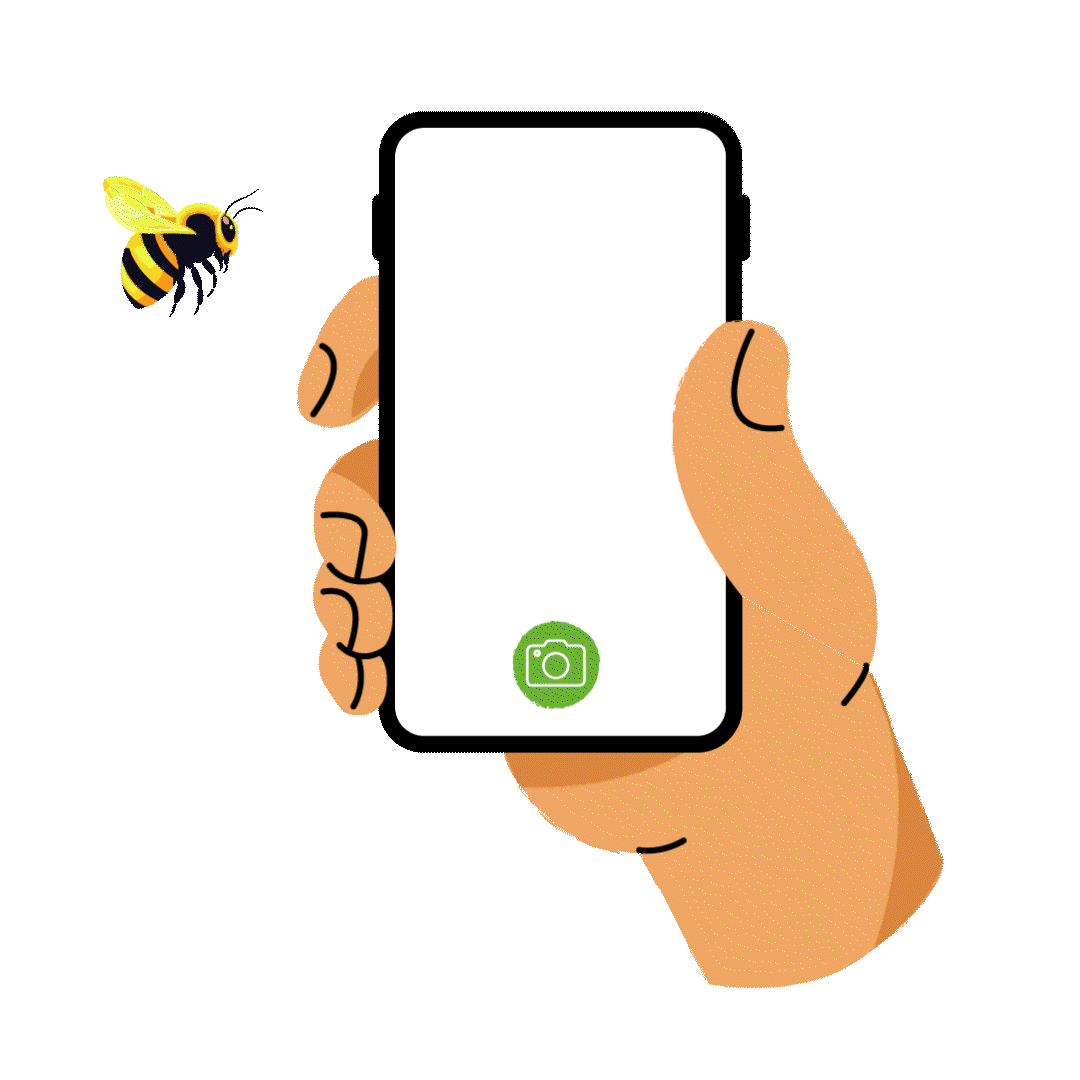Blog
Community Science: What's the Buzz?

Story by Ambor Bends, a graduate student learning through Miami University in conjunction with the Cincinnati Zoo & Botanical Gardens in their Project Dragonfly Program.
Community science is about so much more than just science. While on a walk at Rowe Woods this past week, the sun encouraged bees to be out-and-about, busily buzzing from one plant to the next. I used the iNaturalist and Seek apps on my phone to identify the plants as white beardtongue (Penstemon digitalis) and common milkweed (Asclepias syriaca). The bees were so quick, sprinting from one bloom to the next, that after many attempts, I gave up trying to identify them accurately! I had such a great time trying to get photos and learned so much as I observed the bees collecting pollen and nectar.
Sadly, our native bee populations are on the decline locally and globally as warmer temperatures and other factors change ecosystem dynamics. Utilizing apps like iNaturalist and Seek to document what I am observing is a great way to collect data on local populations. This information can be important for biodiversity and conservation initiatives. It can also be shared with others using the app so they know what is being seen during this time of the year and where to find it as they are out exploring. Using observation documentation apps are great online examples of how community members from all over the country can participate in community science projects and exciting nature exploration challenges! These “challenges” are similar to scavenger hunts in nature and promotes learning in a fun way, just by taking a walk.
Cincinnati Nature Center offers many hands-on opportunities to explore community science programs onsite. One program that I participated in last year at the Nature Center was firefly population monitoring—documenting where they are found and their flash patterns. We not only got to monitor known populations, but also went exploring for more elusive species and tried to be the first to document them on the property. Who knew there are more than two dozen species of fireflies in Ohio? It was amazing to explore the grounds at night, watching the fireflies light up the forest twinkling like Christmas lights or floating like chinese lanterns above the fields, and hearing all the sounds of night that I missed on my day hikes. It was like a whole new world had been revealed! Community science programs like this allows volunteers to not only learn more about specific nature topics and help in scientific studies, but also invites new valuable connections between like-minded people with similar interests.
When I was a kid, it was fun to run around catching fireflies in the dark. If I was lucky enough to open my hands and see the soft glow of a firefly, I would stare in wonder and then watch it take flight again, flashing up into the night sky. Somehow, over the years, this childhood excitement and exploration of the outdoors had escaped me. My community science connection as a volunteer has encouraged me to once again want to explore and learn more about the wonders to be found in nature, as well as share my experiences with others. Our natural world needs people working together to find solutions to local and global environmental issues. By participating in community science, you have an opportunity to give back to science, and maybe even a chance to rediscover some childhood excitement of your own!